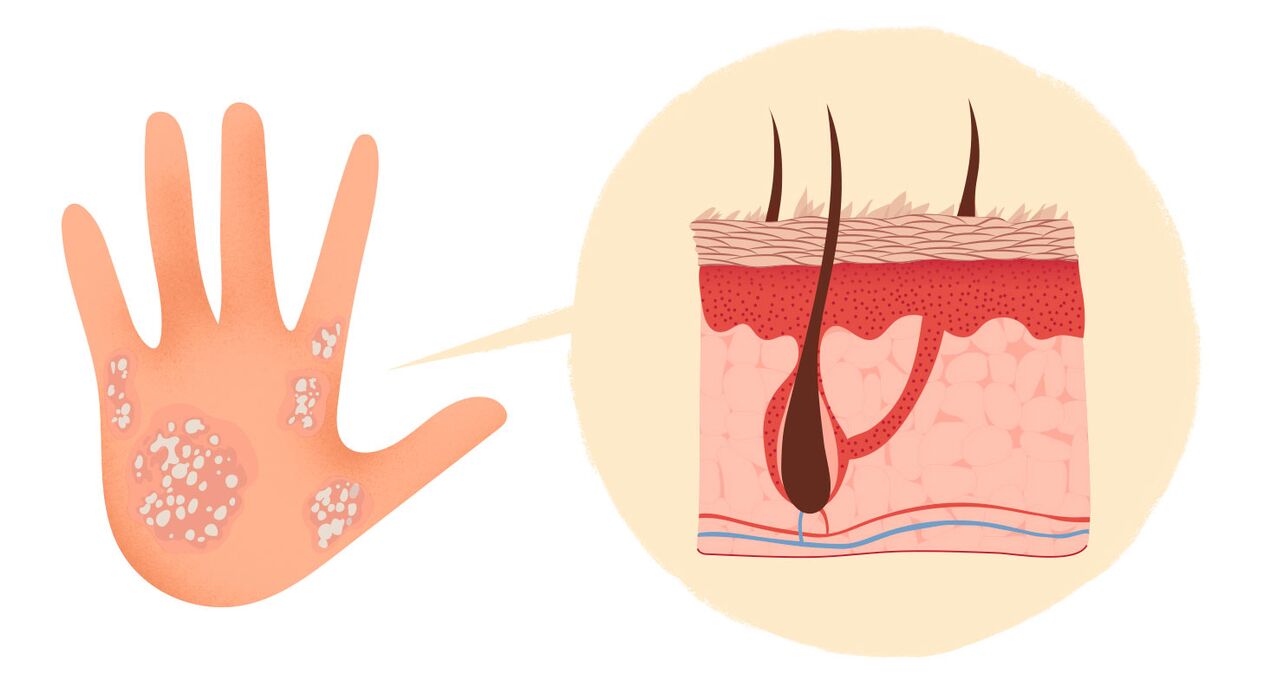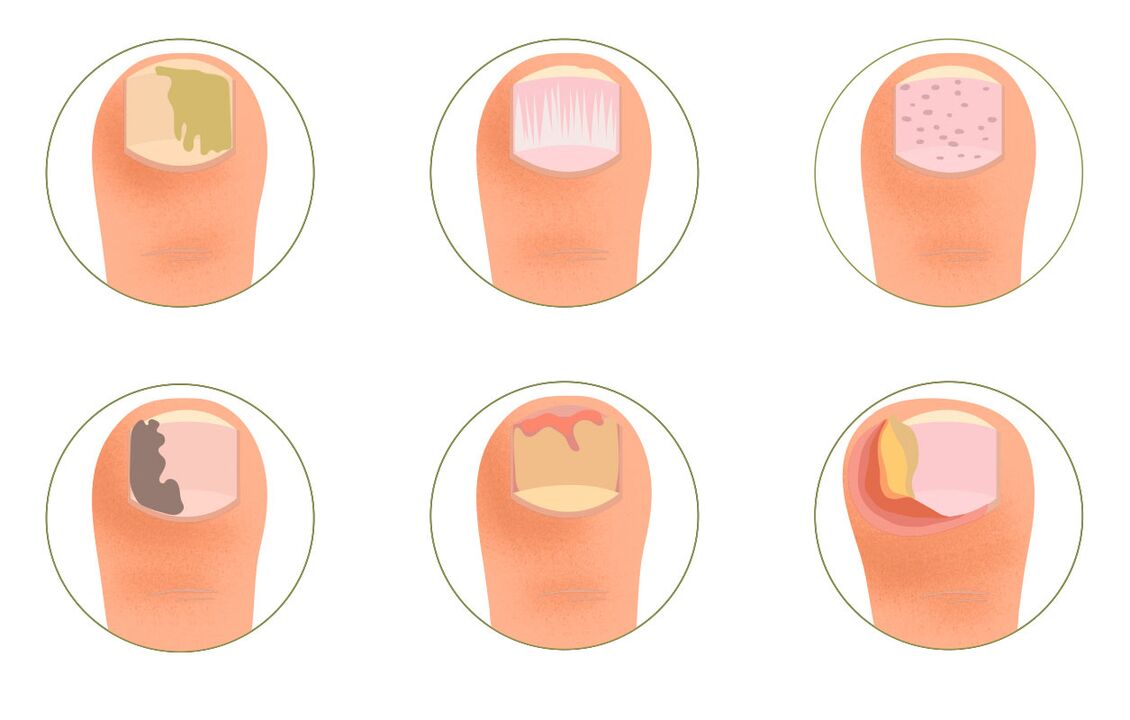
The most common symptom of psoriasis is the formation of psoriasis plaques, which are formed by inflamed areas of the skin. However, this disease can not only manifest on the skin. We understand how psoriasis starts, how it develops and what the signs of psoriasis are.
In most cases, the first symptoms of psoriasis appear at a young age, but psoriasis can exceed one person even in old age. The initial symptoms of psoriasis can be subtle: the disease can start with lesions in a small area of the skin, usually in the folds of the extremities or scalp. Therefore, many patients may not notice the initial performance. Does psoriasis make the skin itchy? In fact, one of the symptoms of psoriasis is itching. Moreover, at first a person only feels itching and tightness, and then red spots begin to appear on the skin.
The course of psoriasis greatly affects the quality of human life. Many patients will not only feel physical discomfort, but also psychological discomfort. However, modern medicine can effectively control the manifestations of diseases. New psoriasis drugs developed in the 21st century, especially genetically engineered biological drugs (GIBP), will allow you to completely get rid of disease manifestations and live a fulfilling life.
What are psoriatic plaques?
Psoriasis plaques are the most common symptom of psoriasis. Plaques are enlarged, inflamed areas of red skin that protrude above the surface of healthy skin and are covered with white scales. The plaque may be painful, itchy, ruptured, and bleed.

psoriasis. Sign
The appearance of psoriasis on the skin and nails
leather
- Red, inflamed plaques.
- The plaques are usually covered with white scales.
- The plaque may be painful and itchy.
- Sometimes they rupture and bleed.
- Scattered patches may appear on the scalp.
- Plaques can grow and fuse with each other, covering a large area of skin. In severe cases, the entire skin is a large patch. This condition is called erythroderma.
nail
- Discoloration of nails or dents, dots, or streaks on the nail plate.
- Over time, the nails thicken and become gray, yellow, or brown. It will collapse and bleed.
- The nails will peel and fall off. As psoriatic plaques form here, the skin under the torn nail thickens.

The most common symptoms of psoriasis
Psoriasis itching and bleeding
Skin itching and burning are common symptoms of psoriasis in 90% of patients with psoriasis. The itching caused by psoriasis is different from the itching caused by other skin diseases. The itching of psoriasis can be very intense, even in areas of the skin where there are no visible plaques. Skin scratching caused by psoriasis itching can cause a new rash to appear, which is the result of mechanical trauma to the skin.
Cracks in the skin and bleeding from psoriasis
Psoriasis plaques can appear anywhere on the skin. Sometimes they will crack as the skin on the plaque becomes very dry. As the plaques increase, the cracks will expand. As they grow larger, they can penetrate deep into the dermis-the layer of skin where the capillaries are located. Then the capillaries are damaged and ruptured, and the plaque begins to bleed.
The initial symptoms of psoriasis can occur anywhere, but usually, the skin begins to crack and bleed. Performance location:
- Elbow
- knee;
- brush;
- Palms and soles.
Psoriasis pustules
The main symptoms of pustular psoriasis are pustules that appear on psoriasis plaques with white or pale yellow fluid inside. This is a rare form of psoriasis, and only 2% of patients will develop pustules. Pustular psoriasis is a very dangerous disease. It can cause serious complications and therefore requires urgent and complex treatment and referral to a specialist.
How do pustules form? How does pustular psoriasis start?
- First of all, with pustular psoriasis, plaques are formed, formed by dry, red skin, and painful when touched.
- Then pustules filled with pus form on the plaque.
- The pustules quickly merge with each other, forming large blisters.
- Then they dry and fall off, leaving dry skin underneath, and they will soon reappear.
Teardrop-like plaques of psoriasis
Small red or pink scaly nodules-patches of skin that look like water droplets-are the symptoms that distinguish teardrop psoriasis. Patients may experience several to hundreds of teardrop-like elements. Nodules anywhere on the skin, but most often occur in:
- Shoulder;
- Stomach;
- Back;
- hand;
- leg;
- scalp;
- ear;
- Face.
Symptoms of guttate psoriasis can develop rapidly within a few days. Sometimes teardrop-like plaques can cause itching in psoriasis. Usually these elements are very small, not exceeding 10 mm in width.
Usually, teardrop psoriasis comes on suddenly after infection, mainly a respiratory infection.
Psoriasis pain
The pain of a rash occurs when the skin is damaged and ruptured due to inflammation and excessive thickening of keratinocytes. As a result, nerve endings in the dermis are stimulated and send pain signals to the brain.
But the appearance of soreness is not only due to mechanical damage to the skin: inflammation in the body of patients with psoriasis affects the brain's perception of pain. In addition, each person has a separate threshold for pain sensitivity, so the pain of patients with the same disease image may cause different reactions.
42% of patients complained of painful projection of skin lesions caused by psoriasis. To a greater extent, this symptom is common in the following people:
- female;
- elder;
- Patients with severe psoriasis;
- Patients with long-term psoriasis;
- Patients with psoriasis.
Peeling (dandruff) and psoriasis
Psoriasis plaques on the scalp are hidden and may not be visible. However, like other parts of the body, psoriatic plaques can peel off and form dandruff-like scales. Do not confuse psoriasis flaking with dandruff, because dandruff is caused by a fungal infection, while psoriasis is caused by inflammation. Therefore, these symptoms need to be treated in different ways.
Like other symptoms of psoriasis, scales occur during exacerbations and disappear during remission. There are many reasons for worsening scalp psoriasis:
- cold weather;
- Dry air;
- pressure.
Comment on what to do when psoriasis has scaly and inflammation
Changes in psoriasis nails
- Nail psoriasis occurs in half of patients with psoriasis, and in patients with psoriatic arthritis, it occurs in 80% of cases. Usually, the failure of the nail plate precedes the development of psoriatic arthritis.
- Usually, nail psoriasis accompanies other types of psoriasis on the skin. Only 5-10% of nail psoriasis patients have no lesions on the skin.
- Nail psoriasis occurs in different patients, regardless of their age, gender, or duration of the disease.
- Changes will affect all or part of the nail plate. They appear on one or several nail plates, and more commonly on the hands.
- Nail psoriasis is usually accompanied by ordinary (vulgar) psoriasis and psoriatic arthritis.
- Psoriasis affects the condition of the nails in different ways. They can grow faster or thicker. The nail plate usually turns white, yellow, or brown.
- Thimble-shaped depressions and streaks appear on the nails.
- As the psoriasis process progresses, the nails begin to deteriorate and are eventually rejected, losing their connection to the nail bed.
- Damaged nails can cause unpleasant and painful sensations, which can significantly reduce the quality of life.























